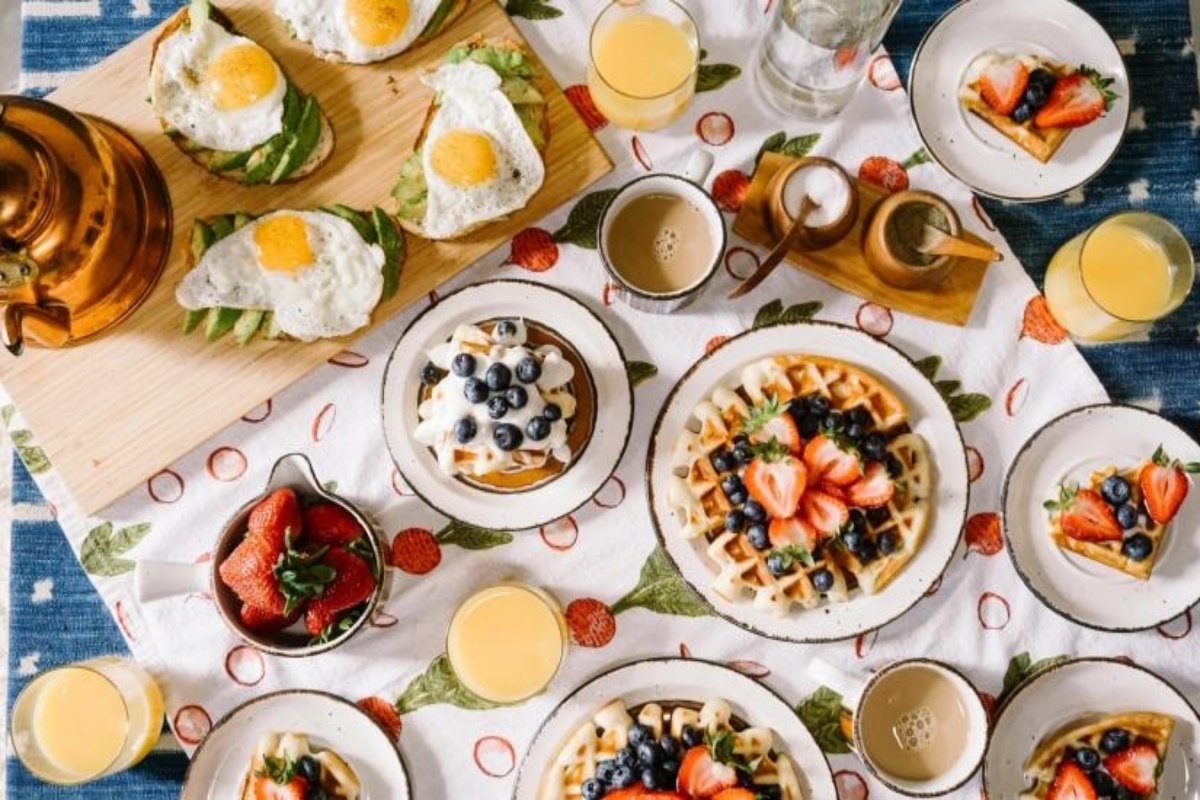Eid ul-Fitr is one of the biggest festivals celebrated by Muslims across the globe. It marks the end of the holy month of Ramadan when observing Muslims self-reflect and abstain from eating and drinking between dawn and dusk.
Every Muslim culture celebrates Eid ul-Fitr a little differently. For instance, in Turkey, the celebration involves handing out candy and sugar-coated almonds to children. For Moroccans, the holiday spread is incomplete without sweet treats like Fekkas, Kaab el Ghazal and Ghoriba Bahla. Meanwhile, in Indonesia, traditional delicacies like Ketupat—which is considered a symbol of blessings and forgiveness—are prepared as part of the festivities.
Advertisement
Shahi Tukda
Also known as Double ka Meetha or Indian bread pudding, this sumptuous sweet dish is made with slices of bread, condensed milk, sugar, ghee or clarified butter, saffron and cardamom. It’s a popular Eid delicacy in India and Pakistan. There are several theories regarding the origin of Shahi Tukda. Some believe that Babur, the founder of the Mughal empire in India, introduced it to Southeast Asia in the 16th century.
Advertisement
Beef Rendang:
Tender, caramelized meat slow-cooked in coconut-flavored spicy dry curry makes this luscious beef stew a royal treat for the tastebuds. It’s typically served with steamed rice, fresh salad or Nasi Minyak (scented rice). Although Rendang is traditionally an Indonesian dish, it’s just as popular in Malaysia, Brunei and Singapore.
Sheer Khurma:
Made with broken semolina vermicelli, this aromatic pudding is an integral part of Eid spreads in Southeast Asian households. Spiked with rose water, dried fruit and fragrant spices like saffron and cardamom, this luscious dessert is typically served right after Eid prayer in the morning. Sheer Khurma is considered a native to Persia that was introduced across Central and Southeast Asia through the Silk Route.
Kimami Sewaiya
Just like sheer khurma, the star ingredients of this dessert are vermicelli and milk, but this one is slightly thicker in consistency. Lotus seeds, almond, coconut, cashews and raisins are also added in the luscious mix of milk, khoya, sugar and vermicelli to make it richer. A decadent dessert to relish in the festive season of Ramadan. Kimami sewaiyan is packed with the goodness of lotus seeds, almond, coconut, cashews and raisins cooked with luscious mix of milk, khoya, sugar and vermicelli. Serve with a garnishing of nuts and cardamom.
Mutton curry
This robust mutton curry is teeming with aromatic masalas, cashew nut paste, rose water and saffron. The succulent and spicy mutton pieces pair very well with sheermal and bakarkhani.
Biryani
You saw this coming, didn’t you? A quintessential Eid spread is incomplete without biryani. Fragrant rice dish layered with succulent pieces of your favourite meat, biryani is hit across ages. Team it with raita or spicy salan and you would know what we mean.
Nihari
The word Nihari originates from the Arabic word ‘Nahar’, which means ‘day’. It is traditionally a breakfast dish, which is made with an array of soothing spices and kewda water. But the curry can also be enjoyed during evenings over a gathering with friends.
Sheermal
The slightly sweet and chewy flatbread made with the goodness of ghee, sugar and saffron-enhanced milk was popularised on Indian terrains by the Mughals. They make a delightful pair with kormas and niharis.
Advertisement











